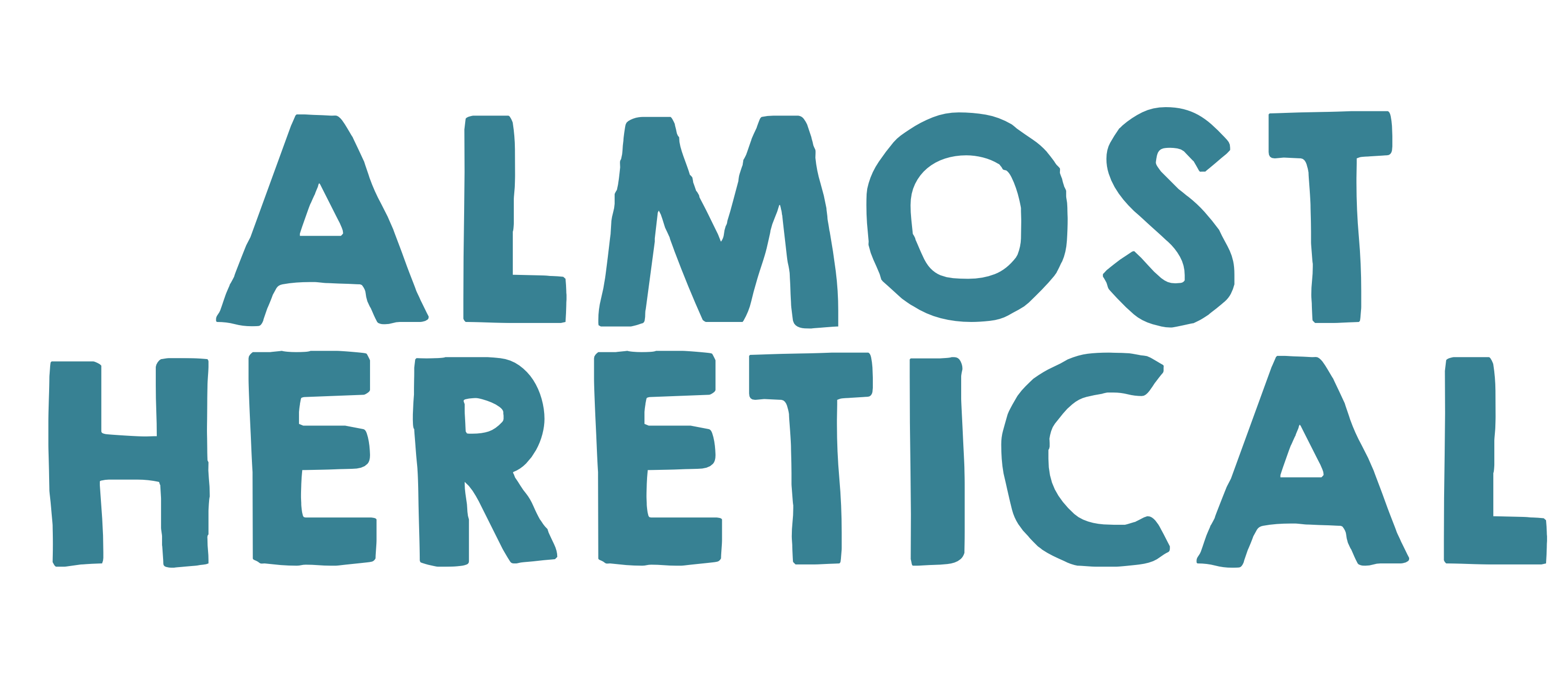Become a supporter here to listen to the full 2-hour interview with Tim Mackie.
A Deep Dive with Tim Mackie from The Bible Project
In this episode of Almost Heretical, we sit down with Tim Mackie, co-founder of The Bible Project, to explore the intricacies of biblical texts and what they can reveal about God, humanity, and history. Tim shares his journey from being a professor and pastor to working full-time with The Bible Project, where his passion for biblical studies continues to flourish. From his deep research into ancient manuscripts to his work on Bible Project videos, Tim offers insights that both challenge and inspire.
Tim Mackie on Church and Bible Interpretation
Join us as we discuss how Tim Mackie approaches the concept of church today and why understanding the Bible through design patterns can transform how we read these ancient texts. Tim’s unique take on the intersection of history, literature, and theology has made The Bible Project a global resource for biblical studies.
Why Tim Mackie’s Work at The Bible Project Matters
At The Bible Project, Tim Mackie is helping people from all walks of life engage with the Bible in transformative ways. This episode delves into Tim’s perspective on how the church and individual believers can navigate faith and understanding in today’s complex world. Tune in to hear more about Tim’s work and how it’s impacting modern biblical scholarship.
This is Part 1 of the conversation with Tim Mackie.
Listen to Part 2 with Tim Mackie here.
You will learn:
- How Tim Mackie approaches the Bible’s intricate design patterns and literary structures.
- The origins of the Hebrew Bible and how ancient texts were passed down and adapted.
- How repetition and patterns in Scripture serve as intentional communication tools.
- The difference between reading the Bible as literature versus seeking historical accuracy.
- Insights into how biblical authors shaped their stories for deeper meaning and connection.
- The significance of Genesis 1-3 as a template for understanding the rest of the Bible.
- Why understanding the Bible’s design helps modern readers engage with Scripture more thoughtfully.
Transcription
Tim R.: We’ve been looking forward to for a while now with a really great Bible scholar and also a friend of ours and fellow Oregon resident, Dr. Tim Mackie. So Tim now works full time with the Bible Project, which, if you haven’t checked it out, go to thebibleproject.com. Their mainstay is essentially producing animated videos on books of the Bible, themes in the Bible, skills and approaches to reading the Bible; but really it’s just a great all around collection of resources. Tim was a professor, he was a pastor for a little while, and he’s basically moved to full-time working with this crowdfunded nonprofit. Basically he’s got the dream job, just doing nerdy Bible stuff full time. So if you want some extra resources, I’ve learned probably more from Tim than any other scholar out there, and I can vouch personally that he’s a really great dude who’s been willing to process messy parts of Christianity and ugliness in the church and my own story and all that, so happy to have him on the show.
Nate: One little piece to note here, he did do this call from a log cabin with a bunch of relatives in Washington, so you might hear some kids run in and out as well.
Tim R.: Oh, and one last thing, Tim’s a pretty nerdy dude and loves talking about this stuff. I mean, so nerdy that I think Star Wars comes up two or three times in the conversation. But as part of that, we had a lot of fun talking, and so we got a pretty long conversation in, so this is going to be just the first of two parts. So next week, tune back in and we’ll part 2 of our conversation with Tim Mackie.
Nate: Here’s part 1.
Tim Ritter: Okay, I guess I’ll just try to get a ball rolling and see how it goes. Tim, you’re a Bible dude, Bible nerd, professional Bible nerd. We’ve started a miniseries in the last couple months, How the Bible Works, asking questions about the mechanics of these texts, how to understand it, how to approach it, all that. You’ve been doing some fun research, especially the last couple years, and some of the language you’ve used is, “design patterns,” or actually a phrase of yours that I’ve kind of is the idea that when you really look closely into the Bible, especially the Old Testament, you see that there are signs of intelligent design.
Tim Mackie: [laughing] Yeah, not at all to be confused with the other conversation that uses that term. You know, that term has a lot of baggage for people in different communities, but it’s a helpful analogy.
Tim R: Fair. But just to help us jump in, give us a snapshot. What do you mean, what is this phrase, “design patterns,” and what have you been exploring?
Tim Mackie: Well, my interest in more academic biblical studies came after a couple years, where I’d been taking classes on the Bible as literature in college, but once I got exposed to the Dead Sea Scrolls and began…

